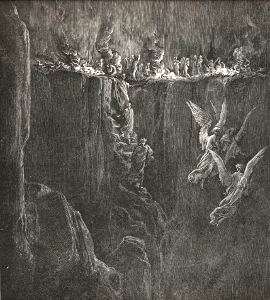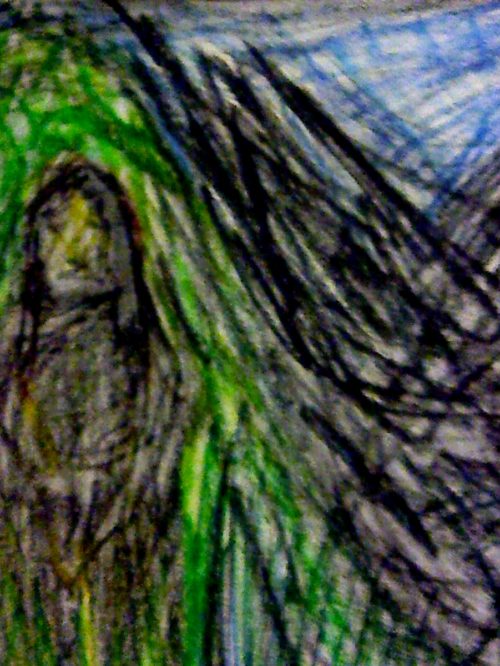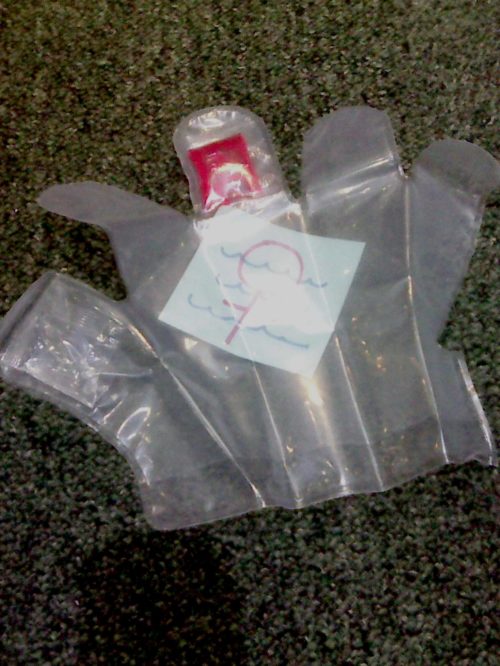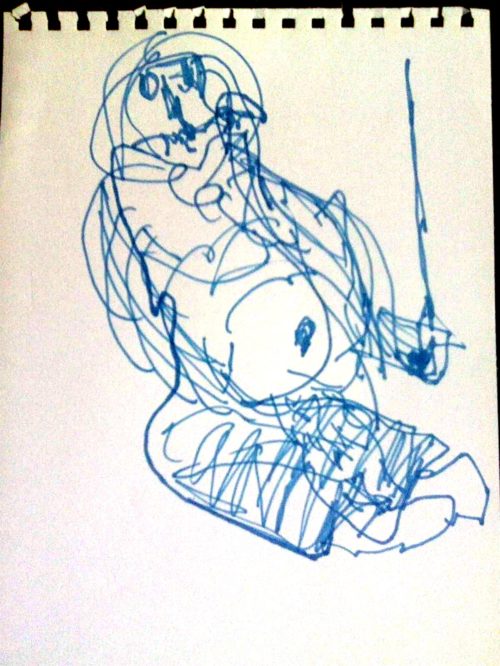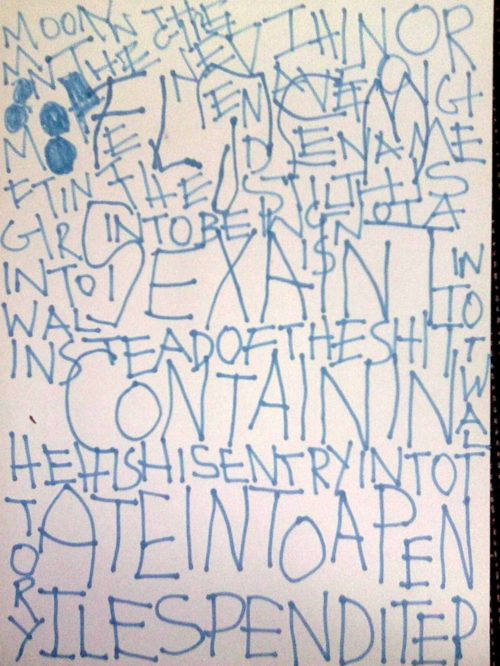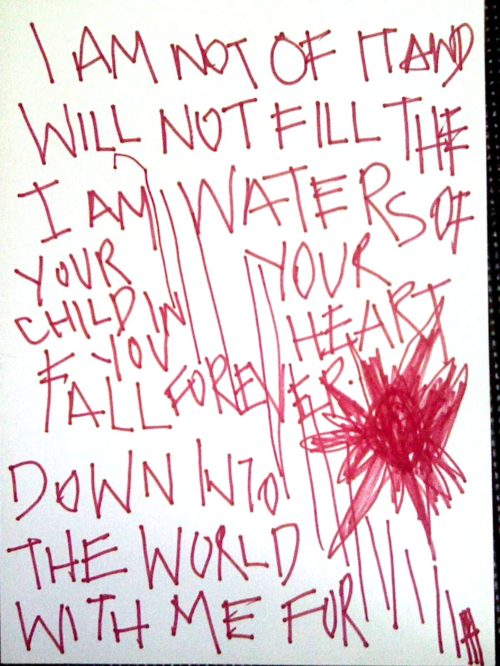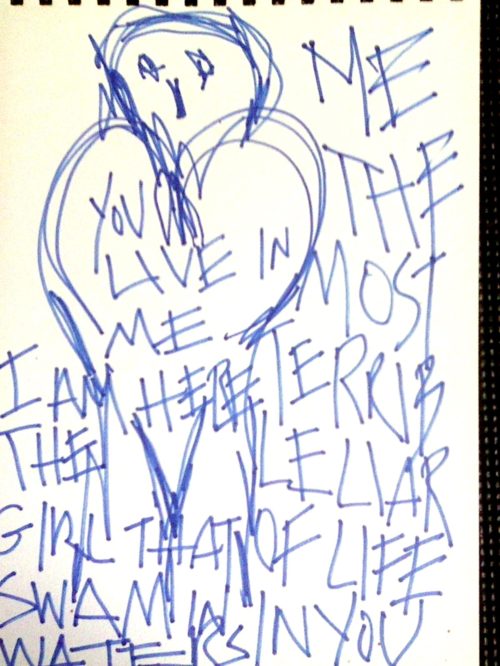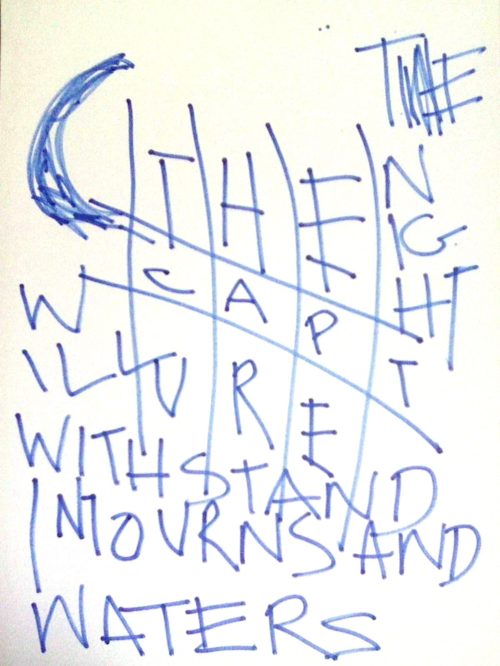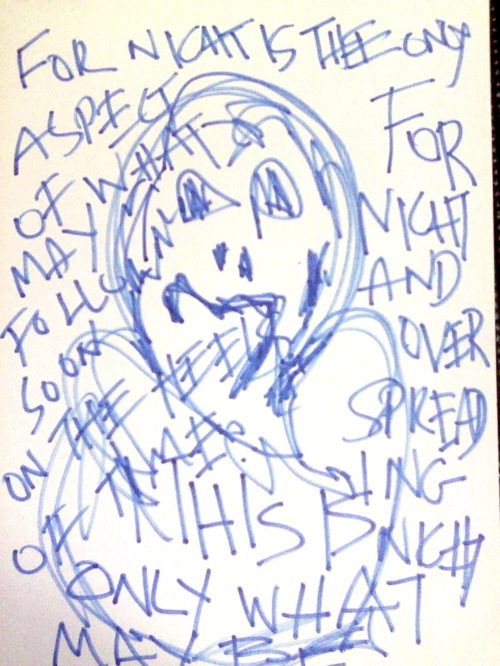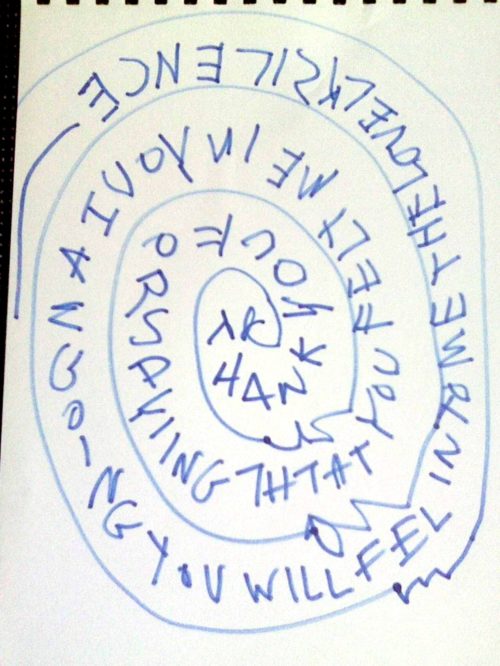A few weeks ago I returned from the toughest meditation retreat ever. Twelve of the roughest, most humiliating days. Rough, because suicidal ideation is never fun. Humiliating, because I was the gibbering nutcase of the group. After thirty-odd years of practising meditation I had supposed I was past getting my arse kicked so badly.

A kasina is a physical object that acts as a target for concentration. Kasinas come in various forms, sometimes as coloured disks (blue kasina, yellow kasina, etc.), or sometimes with elemental properties, such as a disk made of clay, a bowl of water, or an empty aperture of some kind (respectively, the kasinas of earth, water and air). We chose what is perhaps the most convenient form of fire kasina: a simple candle flame.
Kasina practise involves focusing on your chosen object with eyes open, for a relatively short period, until a retinal after-image develops. At this point the eyes are closed and the after-image is taken as the object of concentration proper. Next, peculiar things begin to happen. The meditator enters a realm where the distinction between perceptions and mental images is less apparent than in daily life. As one’s baseline level of concentration increases, so the boundary between external perception and internal mentation becomes increasingly attenuated.
Kasina meditation is a means of access to the realm of the siddhis (psychic powers). It cultivates a state of mind in which visions, out-of-body travel and contact with discarnate entities become vivid, lived experiences. Veridical telepathic and clairvoyant experiences are less common, but may also make an appearance within this state.
Its connection with siddhis is probably one reason why this practice is not commonly taught. Another is that twenty minutes daily, albeit not without benefit, is simply inadequate to develop the concentration required to experience the dramatic stuff. This demands retreat conditions; at the very least, ten days of concerted effort.
A kasina retreat is an occasion for practising magick in a Buddhist style. In secular terms, I would describe it as a long, slow journey into psychosis, and (hopefully) back again.
Bat-shit crazy
I had some stressful psychological issues before the retreat, and was hoping to use it as an opportunity to confront them. I set an intention to meet my Holy Guardian Angel (HGA) in the ultra-realistic vision-space that kasina practice provides, hoping for powerful healing effects. Things started well enough. After a couple of days focusing on the candle and stoking up my concentration, I closed my eyes on getting into bed and my visual field was scored with a luminous sigil. When I opened my eyes it was gone, but back again each time I closed them. Not quite a perception, yet more than a mental image, it conveyed a sense that something had me marked for attention.
Two days later, 4.45am, I was woken by three loud knocks at the bedroom door. The rhythm was forceful, urgent, and sent my heart pounding in my throat. No one was outside and my roommate had not stirred. Both incidents signalled that my angel was on its way, but during the days that separated them, somehow, my concentration had fallen apart. I could not focus on the candle for even a few seconds. Unhelpful thoughts started to make themselves heard: “If I cannot do even this, then what do I have left?” I was sucked into deep and painful depression. My whole life seemed a failure. I hadn’t enough painkillers in my luggage to do the job, so the only option was to hang myself in the woods. I also kept falling into episodes of panicky derealisation; a line from Dick’s Ubik seemed to encapsulate this: “He felt all at once like an ineffectual moth, fluttering at the windowpane of reality, dimly seeing it from outside.†I was locked out from what was truly real, barred from getting back in, yet terrified that if I succeeded I would only be overwhelmed by what was inside. The meditation was harmful; it would only send me mad. How could I get through the following days without killing myself or going bat-shit crazy with panic?
A sliver of me retained enough sense to talk with the teacher. What helped was his reassurance that I could let myself panic, go nuts, whatever; the group would take care of me. Strengthened, I climbed back onto the saddle, and realised I had been resisting the build-up of concentration, fearful of re-entering states similar to my recent, traumatic dalliance with LSD. But once my concentration really was up, it actually wasn’t so bad. The rest of the group now had three days’ march on me, and were hitting the dramatic stuff. The best I could hope for now was a meeting with the angel just before the retreat was due to end.
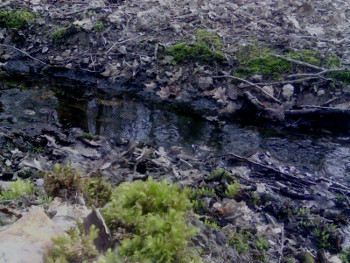
I learnt much about elemental magick on this retreat. Although there was a part of me never in any doubt my angel would appear, predictably this occurred in a totally unpredictable manner.
Spirits of place
There was no candle flame out in the woods. For a few days, it rained softly. I put on my waterproofs and sank gently into the earth for hours. Psychologically, I was frazzled; fire was probably the least suitable element for me to be working with, but in the woods I could surround myself with water and earth. I learnt that whatever kasina you choose, it penetrates into your mind, revealing strange insights.
You stare at the kasina until a retinal after-image forms, and then you close your eyes. A yellow candle flame would be expected to produce a bluish retinal after-image that fades after a few seconds. But this is not what happens. Instead, concentration on the after-image produces an ovoid shape of vivid, yellowish-green. Within the oval, minute filigree details, resembling golden gears or cogs, can be observed; and sometimes, around its edge at regular intervals, exquisitely tiny blue-green dots. This curious visual object is called the nimitta. As concentration develops, the nimitta undergoes distinct changes. From the ovoid it transforms into an intensely bright red dot; next, a crater-like black dot; then it fades entirely, and the background of the visual field assumes prominence. This is the most challenging phase of the practice, but if the concentration can become wide and expansive, yet without straining or spacing out, then, eventually, out of the murky greyness of the background will emerge intense multi-sensory visions.
Initially, the candle flame was required to produce the nimitta. But, after a few days, everyone was reporting the nimitta showing up spontaneously, or at will, without the need for any physical object to produce an after-image. It is as if kasina practice builds an internal reservoir of concentration that, after a certain point, becomes self-sustaining.
A couple of days into the retreat, when I closed my eyes I could see a circulating mass in the centre of the visual field. Again: it was neither a perception nor a mental image. The more I practised, the stronger it seemed to grow. In the woods, I only had to focus on it and the nimitta would appear from out of it, proceeding through its usual stages. The pulsating mass persisted for a few days after the retreat, but gradually faded. It had a strange sense of agency, as if it were something internal but somehow with its own character. Although others were experiencing spontaneous appearances of the nimitta, none seemed to recognise my description of the circulating mass.
I would visit the practice room when my lungs were better or no one else was there, but increasingly I carried the woods with me indoors. Indoors, the nimitta would arise from the candle flame, shining brightly, but against a mass of living, growing tendrils and roots. These slyly formed an arch, the nimitta at its apex, a lamp lighting a passageway deep inside the earth. In the vision space, sometimes I descended into these spaces, sinking down past roots and swathes of cold, wet moss, from within which a single eye would open for a moment and sluggishly close. Impish, mocking faces with a faery vibe would sometimes form. They took delight in the difficulties I experienced with the practice. Others had encountered similar beings, and one day we performed a banishing in the practice room, in case obstructive elementals were finding their way inside.
The most intense visions of the retreat, such as my concentration could provide, for I didn’t reach the level required for the high-end stuff, were encounters with spirits of place. For instance: out in the woods lay a giant made of flint. He was partially buried, partially disinterred, and endured this state forever: never completely emerging from the earth, never completely concealed. Another time, a board buried in soil was turned and, stuck to the other side, a giant, mottled grub, its flesh soft like a caterpillar’s, and papery, like the fabric of a wasp’s nest. Then something insectoid, green, and with compound eyes came creeping across leaf litter on long, black, filament legs. From its pipe-like mouth it breathed an iridescent blue vapour.
These spirits of the woods were only passingly interested in me, but mostly preoccupied by their own mysterious functions. They seemed personifications of geological processes; amalgamated images of what thrives in subterranean damp, or on the dry forest floor. I learnt that when you give yourself to an environment, focusing on its objects to the exclusion of what might otherwise occupy your mind, then that environment extends inside you to reveal things otherwise unseen. The gift of these spirits was the cooling, grounding, stabilising properties of water and earth. I had not until then properly appreciated the revitalising qualities of these elements.
Abramelin in twelve days
The Book of the Sacred Magic of Abramelin the Mage is the standard ritual for attaining contact with the HGA, but ever since an earlier and different translation of the text was found from the one published by S.L. Mathers, there has been disagreement among occultists over whether the Abramelin working should last six months or eighteen. In the heat of this debate, it has been overlooked how Aleister Crowley, having previously attained contact via the orthodox, Abramelin route, very specifically describes in John St. John (Liber 860) a different style of attaining the very same result – but in a mere twelve days.
Knowing that this was possible prevented me from losing hope that my HGA would appear in time. The sigil and the three knocks were signs he was coming. Performing the Bornless Rite three times daily seemed like overkill. One evening, two colleagues expressed an interest in seeing the ritual. “It’s just a middle-aged bloke saying things,†I warned them. Sometimes the atmosphere in the woods seemed altered by the words into expectancy and presence. But often, nothing special happened.
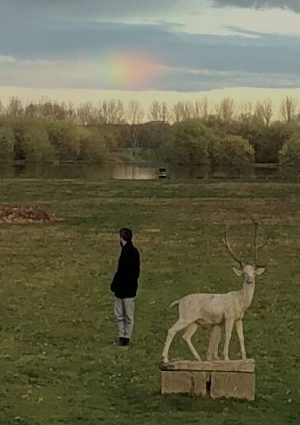
Yet the problem remained that, because of my meltdown near the start, I hadn’t achieved the level of concentration needed for the immersive, multi-sensory vision that I had been aiming for. Some of the others were already enjoying such experiences but, as the penultimate day of the retreat began, I was still in the “dark night†phase: I was irritable and sick of the whole thing. Part of me expected to end the retreat back where I had started, and wanted only to finish now and go back home.
In the afternoon, I sat in the woods with the sunlight on my face. I noticed that complex sigils were appearing spontaneously against the visual field. They had a yellow or yellow-green colour and seemed composed of alphanumeric characters from unknown alphabets, with woven-in fragments of geometric designs, and little glyphs resembling stylized faces and animals. It looked like a kind of mock “Aztec†writing. Each sigil arose spontaneously out of nothing, endured for a moment, then faded before it was overwritten suddenly by the next. This spectacle produced in me a feeling of endlessness and pointlessness.
I had a headache I could not shake, and kept deciding to take some pills, except the pain seemed a useful object to practise with. My concentration was shot, so I had resorted to vipassana rather than kasina, just for something to do. By then it was evening. Sitting again in the woods, I noticed the headache had gone and my ability to concentrate was back. It seemed I was in the next phase of the practice, “equanimityâ€. This conclusion held as I tried to “break†the newly-found state by thinking intentionally about all the upsetting things that had previously wrecked my concentration. The new state was spacious enough to allow all thoughts to come and go without being swept along with them.
Just before lunch on the final day, even as my mind filled with thoughts about the journey home and the impending return to daily life, at last the angel came. In the woods, sitting in the sun, I noticed again the “Aztec†writing, only this time I saw how each preceding sigil was not appearing suddenly, but gradually morphing from the one preceding it. Instead of the sense of pointlessness this evoked the day before, it struck me as the communication of a complex message, some intense and lengthy incantation.

I was looking right at it. I had been looking at it, all along. That which I had longed and hoped for, and had been participating in the practice to attain, was already here; it was the practice. There had never been anything to do for union with my angel other than turn attention to it, for there it was, always at hand.
Not in the way I had supposed, nevertheless my intention had been realised. The retreat was a success. (Except, in magick, in a sense there is never any failure, because only an understanding dependent upon causality can produce an experience of something that does not work, and this is not the understanding of a magician.)
I was not anywhere close to the standard of concentration required for a full-blown, high resolution vision, but the angel had found a way to manifest regardless. The experience was not even a “fruitionâ€, the technical term in Buddhist vipassana meditation for the climactic, self-obliterating moment of full insight into reality. It was simply a magickal result, a synchronicity. But this was a new revelation as far as I was concerned: the love of the HGA is so great, it stoops to connect and communicate through whatever sufficient conditions the magician is capable of extending.


